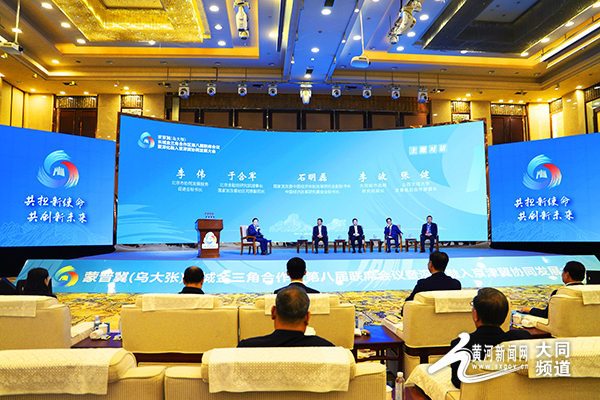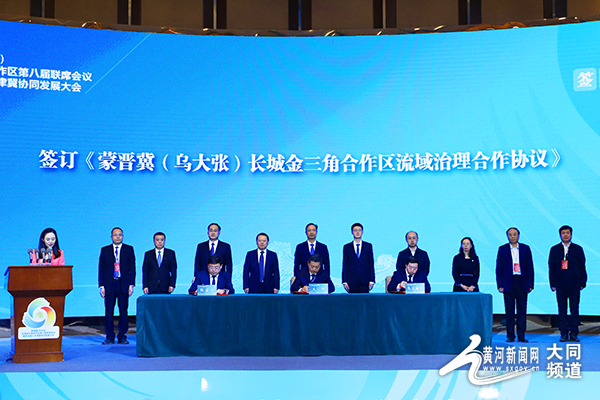Inner Mongolia-Shanxi-Hebei interprovincial cooperation meeting held in Datong

The 8th joint meeting of the Inner Mongolia-Shanxi-Hebei (Ulanqab, Datong, Zhangjiakou) Great Wall Triangle Cooperation Zone is held in Datong, Oct 13. [Photo/Yellow River News]
The 8th joint meeting of the Inner Mongolia-Shanxi-Hebei (Ulanqab, Datong, Zhangjiakou) Great Wall Triangle Cooperation Zone was held in Datong, North China's Shanxi province, on Oct 13.
Government officials, experts, scholars, and representatives from Beijing, Tianjin, Inner Mongolia, Shanxi, and Hebei gathered to discuss regional development and promote the construction of the Ulanqab-Datong-Zhangjiakou cooperation zone, accelerating the deep integration of the three cities into the coordinated development of the Beijing-Tianjin-Hebei region.
During the meeting, the three cities of Ulanqab, Datong, and Zhangjiakou signed cooperation agreements on general aviation industry development, river basin management, and ecological environmental governance, as well as a high-quality development cooperation agreement in the agricultural and pastoral transition zone for the joint prevention and control of major animal diseases.

A cooperation agreement on river basin management is inked at the meeting. [Photo/Yellow River News]
Since the joint initiative to establish the Inner Mongolia-Shanxi-Hebei (Ulanqab, Datong, Zhangjiakou) Great Wall Triangle Cooperation Zone in 2013, the joint meeting has become an important platform for enhancing communication and deepening cooperation among the three cities.
They have established a regular joint meeting system and a coordination mechanism, and achieved remarkable results in areas such as energy layout, digital economy, cultural tourism, specialty agriculture, interconnection of infrastructure, and governance of the ecological environment.
Currently, the three cities have created an economic circle reachable within one hour, with the continuous integration of culture and tourism, and closer ties in trade and logistics.
They have signed nearly 60 agreements on regional cooperation frameworks, coordinated the promotion of cooperation zone planning, and carried out specific cooperation projects.


